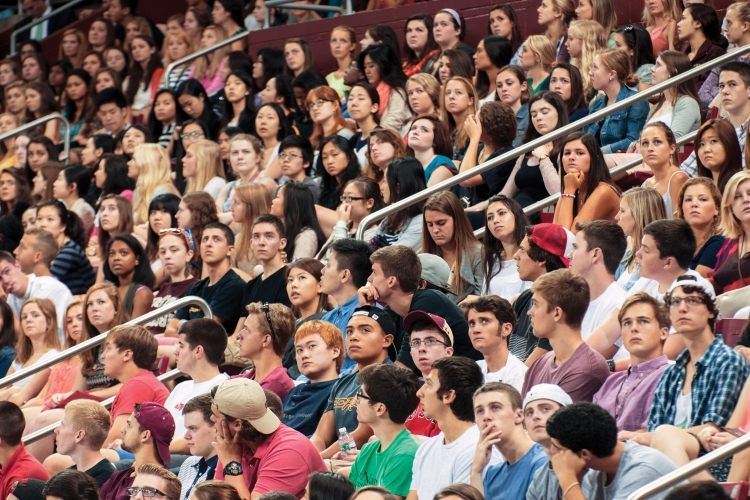
By
When Boston College introduced a supplementary essay to its application form this past academic year, the Office of Undergraduate Admission fully expected a downturn in the number of applicants — and it got one.
But the 28 percent dip in applications for the Class of 2017 was not the most important number, according to Admission administrators: The University’s acceptance rate was 32 percent, placing it among the nation’s most selective institutions, and BC’s yield on admitted students rose from 25 to 28 percent over the previous year.
And at the end of the admission cycle, BC had arguably its strongest academic incoming freshman class, its mean Director of Undergraduate Admission John Mahoney Jr. says the statistics certainly suggest that BC’s decision to add the application essay — even though it might deter prospective students — has been vindicated. What’s more, he and his colleagues feel confident this year’s admission picture is an emerging portrait rather than a snapshot.
“I honestly think that Boston College was one of the major stories in college admissions this year,” said Mahoney. “We took a risk by adding, rather than subtracting, a requirement in the essay. We wanted a pool of applicants who were serious about applying to BC, thereby enabling us to make better decisions among the many qualified and deserving students who make the effort.
“It all worked out just as we hoped, and not just in the short term. Through this change, we feel BC has managed to enhance its reputation and position itself for long-term success in attracting and enrolling students who possess the academic and other qualities we seek.”
Mahoney cited a letter commending BC’s decision received from the Association of College Counselors in Independent Schools — representing such distinguished institutions as the Groton School, Phillips Academy of Andover and Milton Academy, among others.
“In focusing on a smaller number of applications from well-qualified students,” the letter read, “John and his staff reflect the best aspects of our shared mission as educators and admission professionals to help young people find appropriate and fulfilling college opportunities. This sort of integrity and commitment to students is noteworthy.”
Reviewing other facets of this year’s freshman class, Mahoney noted the yield for international students rose considerably over last year, from 16 to 25 percent. Although that figure covers a relatively small group of undergraduates — 165, or about seven percent of the freshman class — the trend still bears watching, he said.
“BC’s international presence has grown substantially, thanks in part to efforts by the Admission and Development offices. Students abroad are impressed enough by BC’s ranking to look at us as a place to apply, but we want them to know what we are about, and how we differ from other elite institutions. The supplementary essay helps to convey that.”
Forty-two foreign countries are represented in the Class of 2017, along with 43 states and Puerto Rico, the Virgin Islands and District of Columbia. AHANA students account for 28.1 percent of freshmen.
Among other factors fueling interest in BC, Mahoney pointed to the University’s facilities and resources in the natural sciences — especially the Undergraduate Research Fellows program, in which students work with faculty on significant research. The Carroll School of Management’s sixth-place ranking in BusinessWeek’s survey of top undergraduate business school, meanwhile, almost certainly contributed to the Carroll School’s 35 percent yield this year, he said.
“Time and again, however, we are reminded of how blessed we are with this campus,” Mahoney added. “The opening of Stokes Hall this year has added another dimension. In the unsolicited comments we hear from visitors, they marvel at Stokes and are particularly impressed that its creation was driven by BC’s commitment to the humanities. This serves to reinforce the liberal arts mission of Boston College, which has long been one of the University’s major attractions.”



